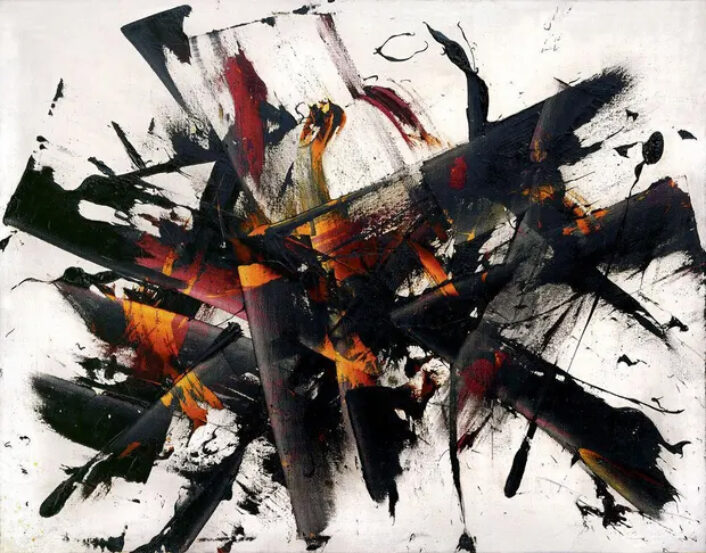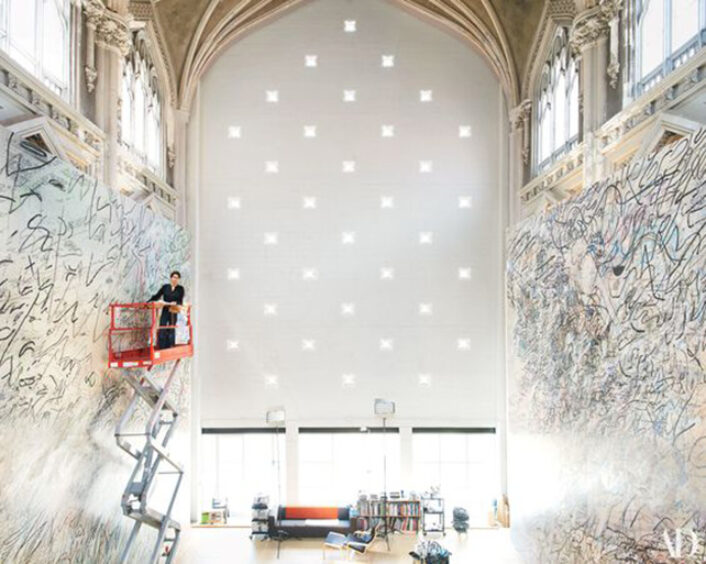Fine Art
Mark Bradford
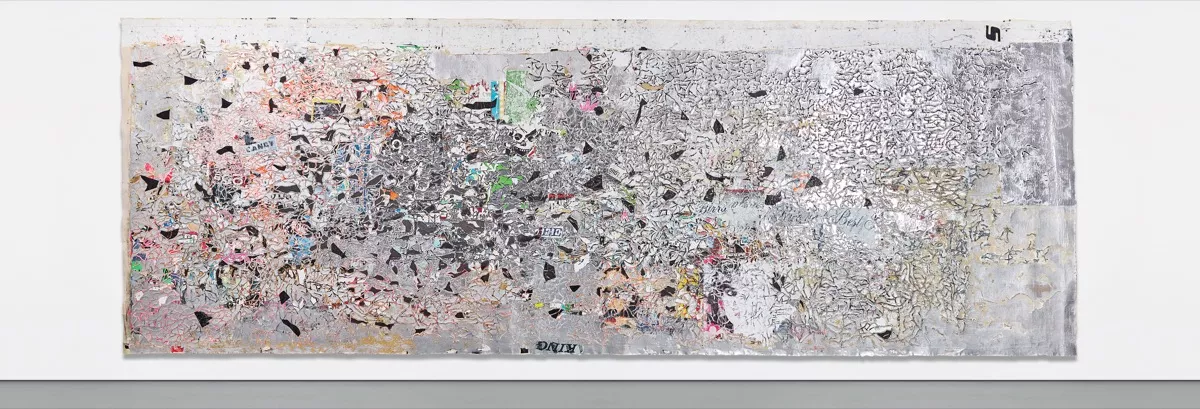
Helter Skelter I, 2007. At forty feet long, this piece was first presented at the 2017 Venice Biennale in 2017.
Image courtesy of: Artsy
Mark Bradford is brilliant… immensely talented as a contemporary artist, he is known for large-scale abstract paintings that he creates out of paper. It is his empathy that characterizes his work and the projects he chooses to portray. With his abstract art, Bradford has illustrated global tragedies; for example he splendidly illustrated Hurricane Katrina, the global housing-market collapse, and the AIDS epidemic. These are just a few of the political and social platforms that he has mapped out on paper in hopes of highlighting affected communities and vulnerable persons.
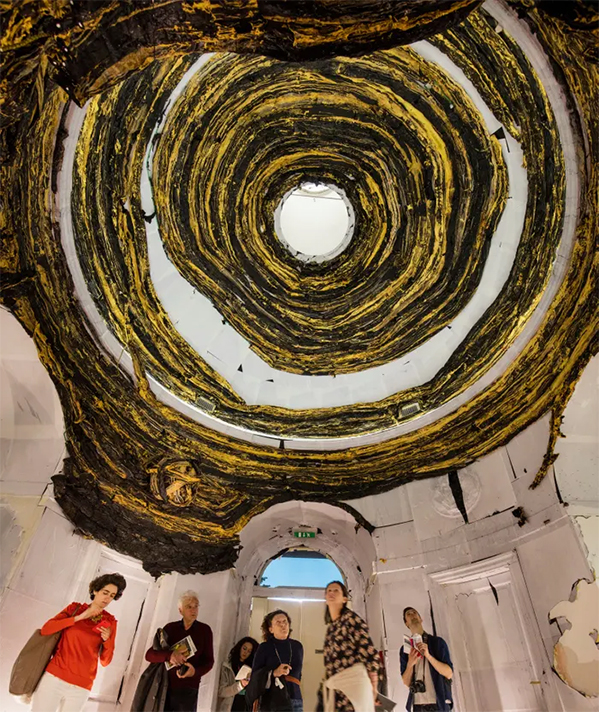
Inside Bradford’s pavilion at the 2017 Venice Biennale.
Image courtesy of: The Guardian, photographed by: David Levene
Bradford first caught the attention of the public eye at the 2017 Venice Biennale. The artist from South Central Los Angeles presented an awe-inspiring pavilion at the fair. Piling up stones and gravel outside the pavilion’s entrance, Bradford camouflaged the space to resemble Monticello. Visitors entered though a side door, mimicking what was required of plantation slaves. Once inside, Bradford’s abstract expressionist art filled the space.
The pavilion’s titled, “Tomorrow Is Another Day,” is a direct quote from “Gone With the Wind”… it is Vivien Leigh’s final line in the iconic movie. With overt references to the Civil War, Bradford confront’s America’s woes head-on. He says (courtesy of The Guardian), “I became really fascinated by the romanticism around the civil war. I’d never really investigated it. I’m black, the civil war was a good thing, the north won – that’s all I knew. I thought it was going to be textbook, ‘OK, this was bad and let’s move on.’ But it wasn’t cut and dried.”
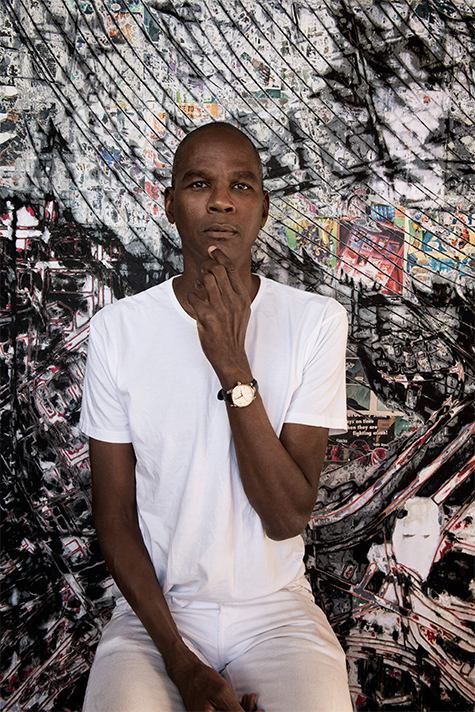
Prior to finding success in the arts industry, Bradford worked at his mother’s hair salon in order to make extra money.
Inmage courtesy of: Prestige, photographed by: Lionel Deluy
Bradford contends that he seeks out uncomfortable situations and mentally-confining places within the art work. He continues, “That’s why I wanted to go into abstract painting.” He is constantly hearing that his work is not appropriate; to which he adds, “I didn’t sign up to be an artist to be appropriate. I’m not interested in the status quo.”
The artist uses salvaged materials which include billboards and advertising boards that have been discarded. Those, in addition to everyday materials and tools from local hardware stores, have helped Bradford create his unique style and language. There is no doubt that his style is his own, one which he says developed out of early experimentation with end papers (translucent tissue papers that are used in hair salons). Since then, Bradford’s repertoire has grown to include maps, movie posters, and comic books… all discarded.
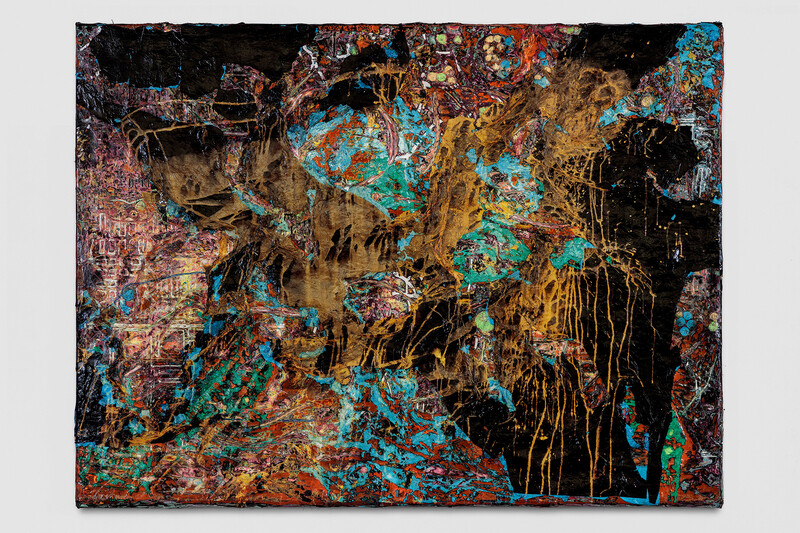
“The path to the river belongs to animals,” 2019. Mixed media on canvas.
Image courtesy of: Hauser & Wirth, photographed by: Joshua White
In addition to social issues, Bradford is interested in mythology. Last year, Bradford presented “Cerberus,” an exhibition at Hauser & Wirth in London. Courtesy of Hero, “The hound of Hades and guard of the underworld sets an appropriate metaphorical tone for nine new paintings that visualise explosive urban unrest with densely scarred canvases. These map-like aerial perspectives appear as apocalyptic landscapes of miasmic colour and interconnected webs, informed by LA’s infamous Watts Riots that raged for six days in 1965 following an incident of police brutality.”
Bradford picked Cerberus, the many-headed dog that guards Hades’ entryway as his metaphor. Cerberus finds himself in-between two distinct places, one which is extremely difficult- the Underworld. Bradford has said that this is often how he feels… as though he is in two places and a part of two worlds: his art and his community engagement.
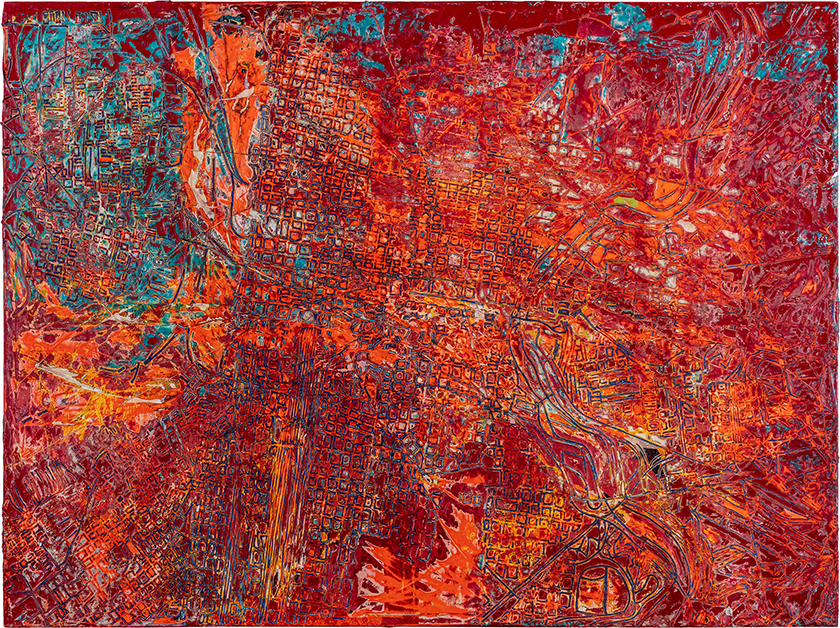
From Bradford’s “Quarantine Paintings” project. The artwork was installed in an unused grain tower inside Hauser & Wirth’s silo in Los Angeles.
Image courtesy of: Phaidon
Bradford spent the early days of the pandemic and subsequent lockdown reflecting. Specifically, the artist studied COVID 19’s ongoing impact on low-income and at-risk communities. He created paintings that depict isolation, resilience, and the struggles that being separated cause.
Bradford says he slowed himself down and personally applied all the materials to his pieces. Rather than producing a series of works, he decided to (courtesy of Hauser & Wirth), “draw focus to the purpose art serves when the social milieu that brings bodies and voices into contact with it – and that significantly shapes our experience of it – has been dispersed.”
